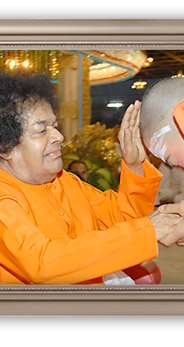October 2, 2009 – Drama on Sankaracharya by Japanese Sai Youth
|
October 1 saw a very interesting announcement being made. The first day of a new month had a new programme in the offing. On Swami's command, Prof. Anil Kumar had announced that the evening of October 2 would witness a drama on the life of Adi Shankara.
If you are wondering what is so special about it, you must know that it was to be presented by the Sai Youth from Japan (Zone 5)! Japanese youth performing the life of India's foremost Advaithic scholar and sage - things could not have been more interesting. And so, on Gandhi Jayanthi, the birthday of the father of the Indian nation, a drama on Adi Shankaracharya, the father of one of India’s profoundest spiritual thoughts (non-dualism), had been arranged.
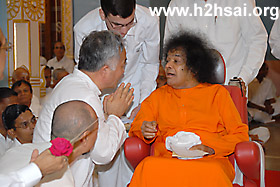 |
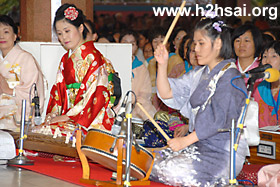 |
By 4:00 p.m., Sai Kulwant Hall was ready to receive its Lord and the Japanese youth awaited Swami with all readiness. At five minutes to five, Swami arrived. Along the ladies side were seated the staff of the Sathya Sai General Hospital and they fervently prayed to Swami to visit them on Sunday as it was their anniversary day. Swami blessed them and seemed to agree to their request.
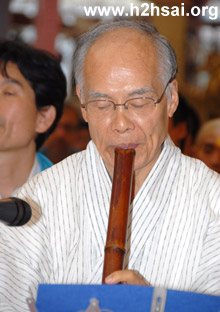 |
|
Swami completed the darshan rounds on the gents’ side and arrived on stage. He immediately spoke to the co-ordinator and asked him to begin the programme. The first part of the programme was music on traditional Japanese instruments. The shakuhachi, which is Japan's vertical bamboo flute with five finger holes, four in front and one at the back, played the lead. The other lead instrument was the koto which consists of a 6 foot long shallow resonating box (made from Paulownia wood) with a set of thirteen strings stretched over movable ivory bridges.
Swami was swaying to the music with a gentle smile playing on His lips. Everyone has imagination and music has universal appeal. So we always conjure images and sights in our minds that match the music we hear. But the sight of Swami is so apt for any kind of music! And that is because it is not the music that adds to the sight but the darshan that adds infinitely to the music!
After that, the Japanese chanted the Vedas! Starting with Ganapati Prarthana (Ganesh Invocation Mantra), they continued with Sahana vavatu... They even chanted the Narayanopanishad to perfection. In the meanwhile, Swami asked once or twice for the drama.
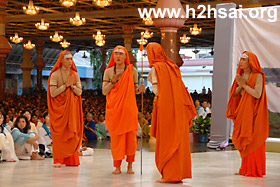 |
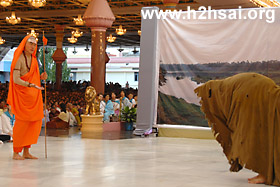 |
When the co-ordinator tried to cut short the programme, Swami stopped him saying, "Let them chant and sing as much as they want." And so, the chanting was followed by a few bhajans, most of them in the Japanese tongue. It was only after the singing that a member of the youth carrying a traditional Japanese fan came up to the front and introduced the drama.
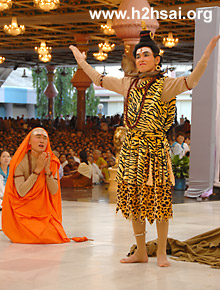 |
|
The half an hour long presentation then got underway. It highlighted the major episodes of Shankara's life from him assuming sanyasa after being caught in the jaws of a crocodile to his travels throughout India where he outclassed everyone in debates; from his being humbled at the hands of Lord Shiva in the guise of an untouchable to the exalted manner in which he kept up his promise to perform his mother's rites.
[To attempt an enlightening quiz on the life of Adi Shankara and His philosophy of Non-Dualism from H2H archives, please go here.]
As the drama concluded, all the youth came forward and almost pleaded with Swami, "Swami, Sankara's teachings on the Advaitha are the ultimate. Guide us along this path to see You in all!" And that statement spoke of the impact Swami has been making on mankind.
While narrow-minded people stop at saying, "There is only One God", Swami goes ahead to say, "There is only one God and God is omnipresent." While the rest are content with, "There is only one religion (and it is mine!)", Swami becomes all inclusive as He declares, "There is only one religion, the religion of Love!" And thus it is that He has universal appeal for He teaches us that there are as many ways to God as there are seekers in this world! He guides each one along his/her chosen path.
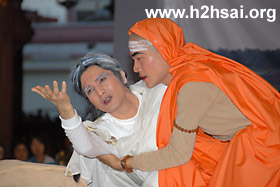 |
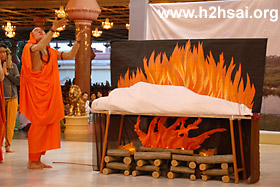 |
Swami beckoned for the 'Japanese Sankaracharya' to come near. He then materialized a beautiful gold chain and put it around his neck. The actor broke down in divine joy and Swami seemed to console him. Patting him and blessing him, Swami said that He would move down the stage to grant group photos. That was also complete soon and it was a beautiful sight to see Swami amidst men and women in traditional Japanese as well as Indian clothes!
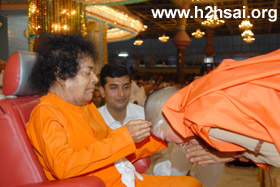 |
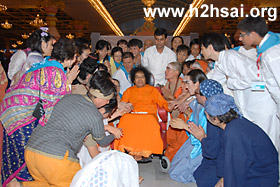 |
Swami moved up the stage and asked them to sing some more bhajans. The youth gleefully pounced on the opportunity and as they sang, prasadam was distributed. At 6:15 p.m., Swami received aarthi and retired for the day.
Dear reader, how do you like this section? Does it help or inspire you in anyway? Please share your reflections with us by writing to h2h@radiosai.org mentioning your name and country.
Thank you for your time.


